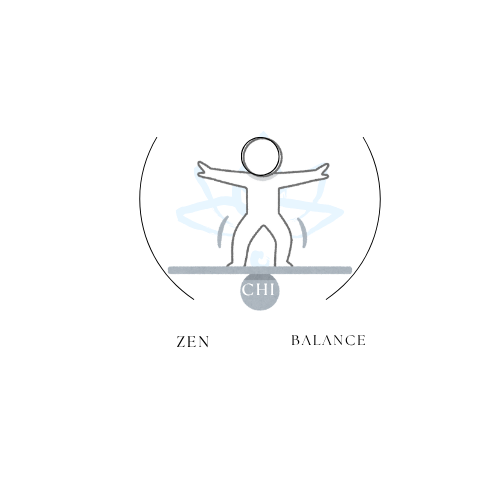
Inner Peace Without Meditation Practical Ways To Settle
Share
Updated on: 2025-10-21
Table of Contents
- Cultivating inner peace for steady peace of mind
- Step-by-step guide to inner peace and inner calm
- Tips to maintain inner calm and peace of mind
- FAQs on inner peace during stressful times
Cultivating inner peace for steady peace of mind
Inner peace is a quiet strength you can carry into any moment. It supports peace of mind, softens reactivity, and helps you meet challenges with inner calm. While life may still feel busy, simple practices such as mindfulness meditation and thoughtful stress management can anchor your attention, ease tension, and help you feel more grounded. You do not need complex routines or long retreats. With a few gentle habits, you can grow a reliable sense of steadiness and clarity.
Cultivating inner peace is less about perfection and more about consistency. Many people start with small pauses and brief breathing exercises, then expand into short sessions of meditation or reflective journaling. Over time, these moments build into a supportive rhythm. If you would like to understand the values behind a calm, balanced approach, you may visit the About page for a helpful overview of thoughtful practices and guiding principles.
It is natural to have days that feel rushed. On those days, aim for simplicity. A three-breath pause before an email, a one-minute body check-in while standing in line, or a brief note of appreciation at the end of the day can all contribute to inner peace. Small steps, repeated kindly, often bring the most reliable change.
Step-by-step guide to inner peace and inner calm
Step 1: Create a calm pause
Begin by choosing a tiny pause that feels easy to repeat. For example, take one slow breath before you start a task, or rest your hands on your heart for a moment of stillness. This pause is not meant to fix anything. It simply creates a gentle space in which inner peace can emerge. Keeping it brief encourages consistency, which matters more than intensity.
Step 2: Breathe with mindfulness meditation
Use a breath-focused mindfulness meditation to steady attention. Sit comfortably, soften your shoulders, and notice the natural rhythm of your inhale and exhale. When the mind wanders, acknowledge it kindly and return to the breath. Even one to three minutes can be helpful. This respectful return builds inner calm and trains your attention to settle without strain.
Step 3: Name and soften stress
When stress rises, it may help to name it quietly: “pressure,” “worry,” or “tightness in the chest.” Naming the experience can lessen its grip and offer perspective. Next, soften one area of the body, such as the jaw or the belly. This simple sequence—naming and softening—supports stress management by meeting discomfort with awareness and care, rather than resistance.
Step 4: Choose one daily habit for inner peace
Pick one small, repeatable action. You might set a morning intention, take a brief midday walk without your phone, or write one sentence of gratitude before bed. These daily habits for inner peace are most effective when they feel natural and kind. If a habit becomes heavy, reduce it until it feels gentle again. Consistency grows when practices fit easily into your life.
Step 5: Try inner peace meditation techniques for beginners
If you are new to meditation, start with a comfortable posture and a short timer. Consider a simple pattern: inhale for four counts, exhale for four counts, repeat for six rounds. You might also try a body scan—bring attention from the crown of the head down to the toes, noticing sensations without judgment. These inner peace meditation techniques for beginners aim to be friendly and adaptable. They invite a stable sense of inner calm without placing pressure on results.
Step 6: Close your day with gratitude and intention
Before sleep, reflect on one moment that felt steady or kind. Then set a gentle intention for tomorrow, such as “I will pause before I react” or “I will speak to myself with warmth.” This nightly close signals safety and completion, which can support peace of mind and help the nervous system settle. If you wish to read more gentle reflections and guidance, the Blog offers thoughtful articles you may find supportive.
Tips to maintain inner calm and peace of mind
- Keep practices brief and frequent. Short sessions lower resistance and make inner peace feel practical.
- Use reminders you already see—calendar alerts, a sticky note on your mug, or a phone background with a kind word.
- Pair a calm pause with an existing routine, like washing hands, starting your computer, or closing a meeting tab.
- Choose friendly language. Replace “I have to meditate” with “I would like a minute of quiet.”
- Track how you feel in simple terms: “tense,” “neutral,” or “calm.” This keeps attention on experience, not performance.
- Allow off days. Compassion sustains consistency and makes it easier to return to your routine.
- Protect small boundaries. A brief “I will reply after lunch” can preserve focus and peace of mind.
- Invite nature when possible. A window view, fresh air, or a short walk can nurture inner calm.
- Start meetings with one breath together. This shared pause can ease group stress and set a respectful tone.
- Reflect weekly. Ask, “What felt supportive? What felt heavy? What will I simplify?” Gentle review keeps practices aligned.
If you have questions or would like to reach out with feedback, you are welcome to use the Contact page. For a broader view of available resources, the Home page provides a simple way to explore new and evergreen content.
FAQs on inner peace during stressful times
How can I achieve and maintain inner peace?
Begin with a small daily pause and a brief breath practice. Add one simple habit, such as a morning intention or an evening gratitude note. Maintain a kind tone toward yourself, and adjust the routine so it stays easy. Over time, steady repetition supports inner peace and helps you meet life with more peace of mind.
What practices help cultivate inner peace during stressful times?
Short mindfulness meditation, mindful breathing, naming and softening tension, and gentle movement can be helpful. Choose practices that feel kind and realistic. When pressure is high, shorten the practice rather than skipping it. Even one minute of attention can support inner calm.
How long does it take to feel inner calm?
Experiences vary. Some people feel a bit calmer after a single mindful breath; others notice change after several weeks of consistent, light practice. Progress is often gradual and non-linear. It can help to focus on the process rather than a timeline.
Do I need mindfulness meditation to experience peace of mind?
No. Meditation is one helpful option, but not the only one. Gentle routines such as journaling, slow walks, and quiet reflection can also nurture inner peace. It may be best to choose what feels supportive and sustainable for you.
What are simple daily habits for inner peace?
Try one-minute breathing breaks, a phone-free walk, or a short gratitude note. Pair a habit with an existing routine to reduce friction. Small, consistent steps often lead to a reliable sense of inner calm.
Disclaimer: This article is for general information only and is not a substitute for professional guidance or care.

I'm a passionate curator at Zen Chi Balance, dedicated to spreading calm, harmony, and mindful living through faith-inspired lifestyle products. I help craft meaningful experiences for our global community of mindful shoppers.
The content provided is for informational and inspirational purposes only. It is intended to encourage personal growth, mindfulness, and balance in daily life. Zen Chi Balance does not provide medical, legal, or professional advice. For specific concerns or guidance, please consult a qualified professional. Visit us at www.zenchibalance.com for more inspiration and resources.
